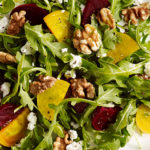
Back to School: How COVID Is Affecting University Foodservice Operators and Food Brands
College campuses have historically been a gold mine for food marketers, if you managed to break into their supply chain. They are notorious for driving volume for food brands and being trend incubators. By that, I mean they have been a wonderful platform for brands to test new formulations or products before launching mainstream. All of this adds up to higher education foodservice becoming a nearly $19 billion industry this past year. And it’s only growing, despite enrollment and recent COVID-related challenges.
Within this highly competitive landscape of colleges and universities (C&U), many institutions are leveraging their dining program to attract new students. Nearly half of incoming students say dining programs and amenities rank as an important factor in deciding which school to attend. In fact, high schoolers now have access to a variety of online sources to scan college food ratings as they make their application choices. As expectations rise, college foodservice programs have transformed from a mere afterthought into a major, marketable perk for campuses. This makes the dining hall one of the hottest spots on campus. That is why it is often the first stop on campus tours.
When it comes to foodservice in higher education, there is a wealth of opportunity awaiting creative food marketers. However, due to new regulations amid COVID-19, things look very different right now. If you’re already working with campuses or you’re looking to play in this arena, there are some drastic changes happening that you should be aware of.
College Campus Foodservice Operations Will Look Very Different This Year
Like many businesses across the U.S., foodservice operations on C&U campuses have practically come to a screeching halt during the pandemic. As of September, only 34% of institutions have decided to teach fully or primarily in person, while 37% are teaching fully online. This has required drastic changes for most campus foodservice operations. Among those campuses allowing students to return, students will have a dramatically different dining experience than they were accustomed to. On-site food operators now have to adhere to heightened safety regulations and increased expectations for digital solutions. And they must continue to meet the evolving demand for quality and healthy meal options. However, instead of investing budget into menu advancements and trends, they will have to shift budget to new operational areas, such as packaging solutions to ensure their programs follow COVID guidelines.
Looking ahead, students can expect changes in the way their food is prepared and presented. Like in grocery stores and restaurants, self-serve stations will be eliminated. Plated or grab-and-go options will be the new norm. Trays and silverware will also be gone and replaced with single-use dinnerware. Students may even experience robots preparing and delivering food, ones like Sally, the salad-making robot.
If you were looking to break into the C&U supply chain, now is the time. With innovative ideas that help operators navigate the rapidly changing landscape on campuses, you have an opportunity to build strong relationships within the C&U system that will benefit your brand in the long run. Here is a look inside my conversation with one of the nation’s leading universities, Michigan State.
An Inside Look at Foodservice Operations From the Executive Chef at Michigan State
In an effort to understand how C&U foodservice operators were going to navigate these uncharted waters, I sat down with Chef Kurt Kwiatkowski, the Corporate Chef of Culinary Services at Michigan State University. In this conversation, Chef Kwiatkowski shared how food brands can best position themselves within this new “normal.” The interview, which you can read in full here, took place just two weeks before the campus announced the suspension of on-campus learning.
So how can food marketers stay in front of these on-campus operators while they are in the thick of it? How can they stay relevant while showing their support to these important industry friends?
How to Maintain a Strong Relationship With C&U Foodservice Operators
My observations, paired with my conversation with Chef Kwiatkowski, confirm that the future of college dining is still unclear. However, it’s important you don’t neglect the C&U sector right now. They have been a great platform for uncovering trends and testing new products, and they will be again (hopefully) soon. Right now is the perfect time to engage as they plan for a new normal.
Here are ideas for how you can bring value to operators during this unprecedented time.
- Provide chefs with new “to-go friendly” ideas. Bring innovation to them through a virtual platform vs. in person. These chefs want to keep their finger on the pulse; however, they may find themselves in the weeds trying to re-create COVID-friendly menus. They will appreciate new ideas within this lens.
- Curate easy-prep meal kits and virtual classes. Partner with C&U operators to craft innovative meal kits with creative packaging and easy-to-follow recipes for students. Offer to host a virtual cooking class where students can engage directly with product leaders and chefs. This may lead to more branding opportunities within the campus media portals.
- Consider functional food tie-ins to promote health. Aim to showcase your products within the functional food realm to create new opportunities. Functional foods are classified as whole, enriched or enhanced foods that provide health benefits beyond the provision of essential nutrients (e.g., vitamins and minerals), when they are consumed at efficacious levels as part of a varied diet on a regular basis. Look to pair your product with ingredients like turmeric, walnuts, avocados, honey, leafy greens and matcha. We’ll likely see an uptick in plant-based/functional foods in the coming months since there has been a strong focus on health during the pandemic.
- Support the adoption of new tech. With online ordering and the delivery of food on campus increasing, operators are using mobile applications to schedule food for pickup or to reserve time to eat in the dining hall. Brands can help curate this space in a unique format to craft messaging and ads.
- Look for on-campus retail opportunities. Ask about alfresco pop-up dining opportunities on campus. Create a safe and fun pop-up restaurant with packaged foods to highlight your brand. This gives the students who are on campus something more to look forward to during the week, and a chance to have more variety in their dining options.
Food Marketers: College & University Foodservice Needs Your Support
As with many sectors of the food industry, C&U foodservice continues to evolve even as I write this. With a third of campuses having welcomed back some or all of their students and working to accommodate social distancing guidelines, many foodservice operators are left trying to manage the complexities of their foodservice supply chain – under the most unpredictable circumstances.
Stepping in to support foodservice operators, in both big and small ways, is going to help you build lasting and impactful relationships in this space. When things do settle down, you’ll be glad you made the investment. You will be well positioned to tap into the huge and influential student population that presents endless possibilities for your food brand.





